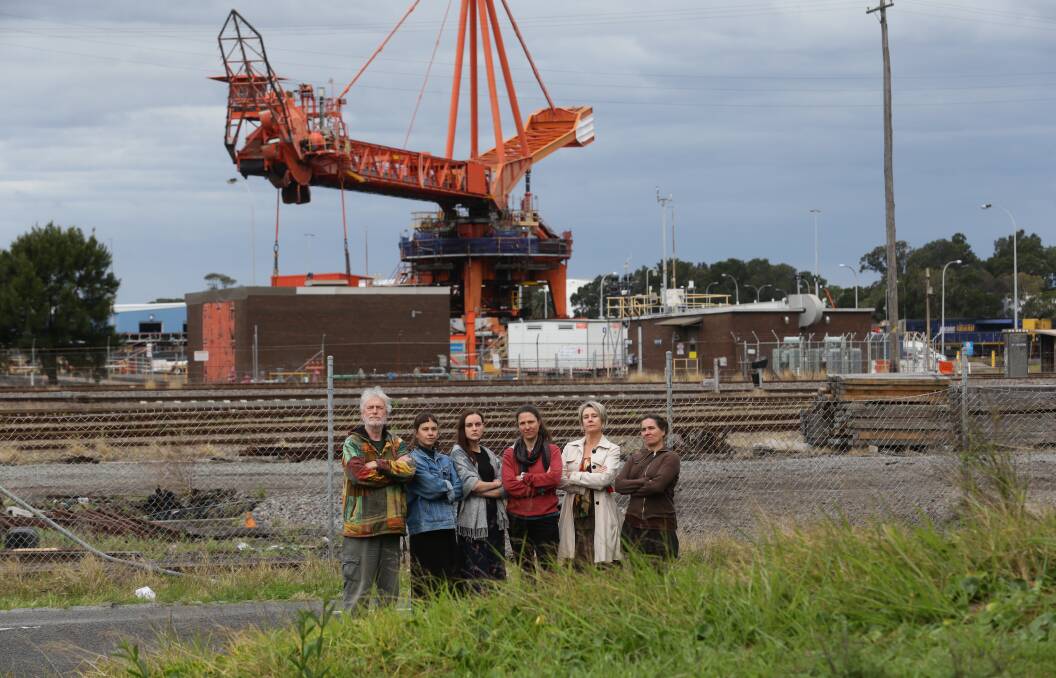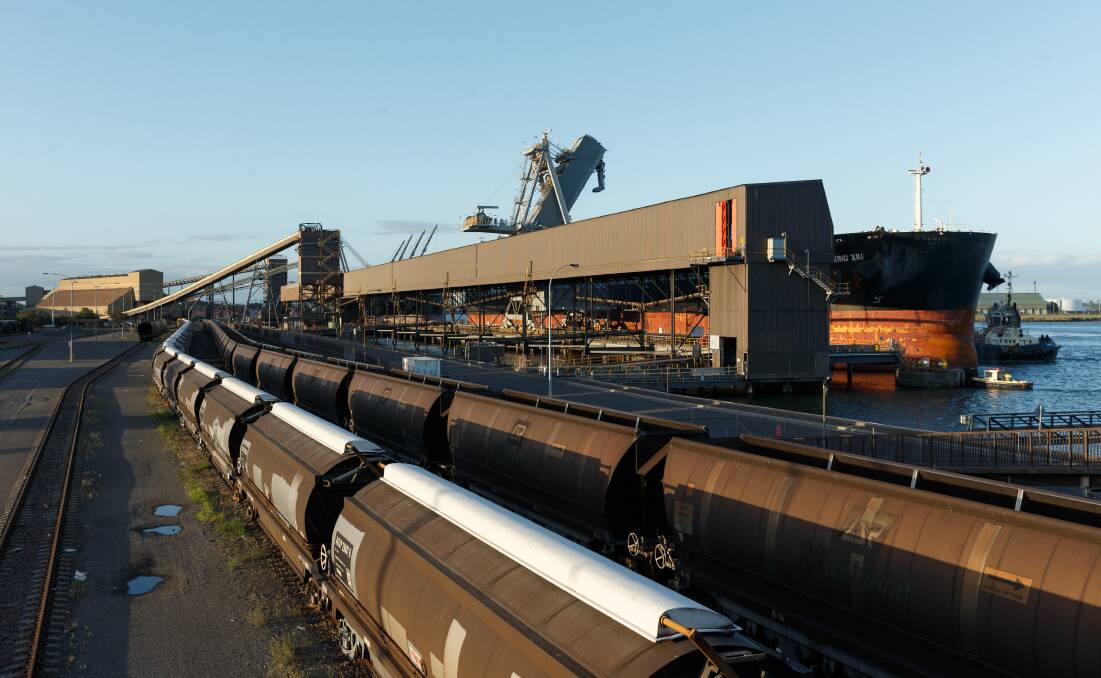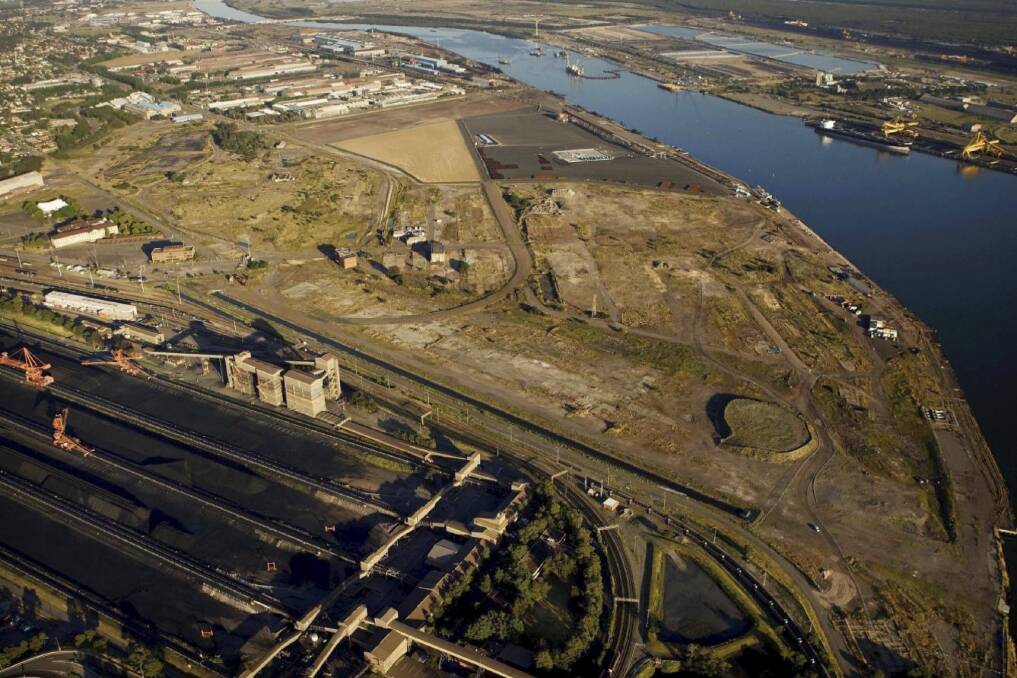
Nearby residents say the NSW government has caved in to pressure from the coal industry by abandoning talk of moving the Carrington coal loader.
Subscribe now for unlimited access.
$0/
(min cost $0)
or signup to continue reading
A 2017 draft of the government’s Greater Newcastle Metropolitan Plan proposed to investigate shifting the coal terminal away from residential areas. But the final version of the Department of Planning and Infrastructure document, made public last week, cut references to moving the loader.
Tighes Hill Community Group spokesperson Charlotte McCabe said the final document showed “just how hard it is for local communities like ours to convince governments to act in the public interest when it comes to the coal industry”.
The draft of the plan said the “Port of Newcastle, working with Newcastle City Council and NSW Department of Planning and Environment, will investigate the potential to relocate coal export facilities and bulk fuel storages away from residential areas and explore options to renew the Carrington Precinct for alternative uses (including tourism)”.
The department said in March that “there were concerns about the potential for conflict between the coal terminal and the adjoining residential area”.

“We were also aware of the potential for a change to the nature of parts of Newcastle Port as tourism opportunities grew,” it said. “The draft plan has suggested some options for the potential conflict to be resolved.”
But by last week the department had changed its tune.
The final version of the metro plan says “the Department of Planning and Environment, working with the Port of Newcastle, will align planning instruments to enable existing port-related activities and investigate options for land uses in this Precinct that support further growth and diversification of trade whilst working with operators and industry to minimise impacts on residential communities”.
Ms McCabe said 364 residents had made submissions backing the draft proposal.
It’s clear that the NSW government has succumbed to pressure from Port Waratah Coal Services.
- Charlotte McCabe, Tighes Hill Community Group
“This was by far the most popular issue in submissions to the draft plan, and it’s clear that the NSW government has succumbed to pressure from Port Waratah Coal Services to remove that proposal from the plan,” she said.
“There is no safe level of exposure to coal dust, and houses in Tighes Hill, some less than 200 metres away from the 25-hectare coal stockpiles at the Carrington site, are covered in coal dust.
“To shy away from even investigating moving this coal loader, which has a record of many pollution breaches, raises real concerns about just what this government and the coal industry have to fear from such a process.”
PWCS, which leases the coal loader from the Port of Newcastle, said in February that it was “very surprised and concerned” about the draft plan’s reference to removing the coal loader.
“We did make a submission about that specific reference, and it’s obviously been considered, and we think it’s a significant and welcome change,” a company spokesperson said on Wednesday.

The company’s Carrington lease ends in 2024.
The PWCS spokesperson said the loader was part of its “long-term plan”.
“As we said in the submission, there’s a number of reasons why you need to have Carrington and Kooragang Island operating.
“Basically because of the way the ships come in, the size of the ships, and sometimes you’ve only got a certain number of berths at one place and you may have more ships, so for us it was very important that Carrington is considered an ongoing facility for us, so it was pleasing to see that recognised.”
Port of Newcastle, which holds a 98-year lease over the port from the government, said: “The draft plan had included an erroneous reference to the future use of this section of port land. This error has been corrected in the final version.
“We welcome the NSW government’s commitment to work with the Port to support further trade growth and diversification.”
Asked on Wednesday why the wording of the plan had changed, a Department of Planning and Infrastructure spokesperson said the amendments “clarify the significance of the port infrastructure in the Carrington precinct”.
The spokesperson then reiterated the final wording of the plan by saying the government and Port of Newcastle would investigate options for land uses in this precinct that support further growth and diversification of trade, whilst working with operators and industry to minimise impacts on residential communities”.
“A new precinct for the cruise terminal has been defined to clarify the separation of tourism and trade areas of the port,” the spokesperson said.
Greens councillor John MacKenzie told Tuesday’s Newcastle council meeting he was disappointed the metropolitan plan had “retreated quite overwhelmingly” from moving the terminal.
He also said the plan had missed an opportunity to articulate a future for the city which moved away from “old industries” and towards environmental sustainability.


